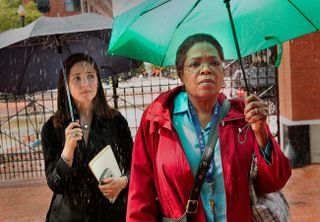
HBO Unveils Trailer for 'The Immortal Life of Henrietta Lacks'

The story of Henrietta Lacks, an African-American woman whose cancer cells created a seemingly "immortal" lineage that continued decades after her death, comes to the screen April 22 as an original movie on HBO.
A new trailer offers a glimpse of Lacks' incredible story. The cells were harvested from a tumor without Lacks' knowledge or permission when she was undergoing treatment for cervical cancer, and they were able to do something no other cells had done before — survive and reproduce in the lab.
After Lacks died of cancer in 1951, her family was unaware that her cells had been taken and were being used extensively in medical research. Reporter Rebecca Skloot uncovered the tale, writing about it in her book "The Immortal Life of Henrietta Lacks" (Crown Publishing Group, 2010), which was the basis for the film. ['The Immortal Life of Henrietta Lacks': Official Trailer | Video]
While Lacks wasn't a scientist, her cells — known as HeLa cells — left an indelible mark in the scientific world. HeLa cells contributed to significant medical breakthroughs, including the development of the polio vaccine, and advances in in vitro fertilization, cloning and chemotherapy, according to Skloot. An estimated 20 tons of HeLa cells have been produced since then, and they continue to multiply and advance research decades after her death.
Original article on Live Science.
Sign up for the Live Science daily newsletter now
Get the world’s most fascinating discoveries delivered straight to your inbox.

Mindy Weisberger is an editor at Scholastic and a former Live Science channel editor and senior writer. She has reported on general science, covering climate change, paleontology, biology, and space. Mindy studied film at Columbia University; prior to Live Science she produced, wrote and directed media for the American Museum of Natural History in New York City. Her videos about dinosaurs, astrophysics, biodiversity and evolution appear in museums and science centers worldwide, earning awards such as the CINE Golden Eagle and the Communicator Award of Excellence. Her writing has also appeared in Scientific American, The Washington Post and How It Works Magazine.
Most Popular

